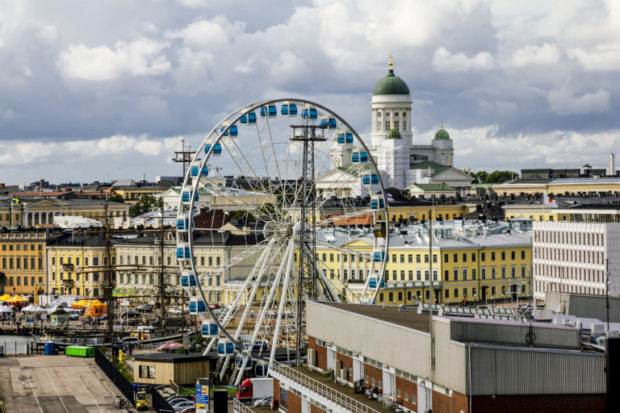What can PH learn from Finland’s educational system?

Helsinki, Finland. (Photo from Toshket/Istock.com via Agence France-Presse)
(First of two parts)
HELSINKI — The education system in Finland has been highly regarded worldwide as it consistently ranks among the top countries in the Program for International Student Assessment (Pisa) and other third-party international studies.
With the Department of Education eyeing the full reopening of schools in November and addressing the ongoing learning crisis exacerbated by the pandemic, what can the Philippines learn from the Finnish education model?
Anita Lehikoinen, permanent secretary of the Ministry of Education and Culture, said children are “focused on learning and not steering,” so there is no standardized national test being administered.
“We don’t have any ranking lists of schools or any higher education institutions and we have made [it a] point in policy that every school is the best possible school for all children in their community,” Lehikoinen told foreign media who visited the country upon the invitation of Finland’s Ministry of Foreign Affairs.
After World War II, the country was among the poorest in Europe, prompting its government to invest heavily in education, so “we can find a good level of employment and industrialize the country,” she said.
Learning through play
Education in Finland is free at all levels — from pre-primary to higher education.
At the preprimary and basic education levels, even daily meals are provided and transportation to students who live far.
“Equal opportunity [for] all means you have to invest in public funding so it is not up to the families and their ability to pay for education,” Lehikoinen said.
The typical age to start comprehensive school education (Grades 1 to 9) is 7, which Lehikoinen said is very late compared with other countries.
“But that has to do with the idea that we believe very much in scientific evidence that children learn by doing and by playing,” she said.
Students may opt to continue their upper secondary education (Grades 10 to 12) by picking either general or vocational education.
Grade 12 ends with a national matriculation exam which consists of four compulsory tests: mother tongue and, depending on the students’ choice, three of the following: second national language, a foreign language, mathematics, or one subject in general studies like humanities and natural sciences.
Finnish schools are given autonomy. They are not micromanaged by a centralized authority because of the “high level of trust” between national and local officials — who decide on funding, curricula, and staff recruitment.
Highly qualified teachers
Lehikoinen said the high level of training for teachers is necessary because they are left to determine their own methods of instruction as well as the textbooks and materials to be used.
Erja Schunk, a lecturer and coordinator for international relations at the Viikki Teacher Training School of the University of Helsinki, said that since they are not controlled by their superiors, the teachers are spared such tasks as paperwork—a problem hounding their Filipino counterparts.
“I don’t have to show my lesson plans or my materials to somebody. My boss never comes to my classroom to see what I’m doing [because] there’s a lot of trust,” Schunk said.
(To be continued)
RELATED STORIES
Bongbong Marcos: Poor educational materials must end
UP-produced educational shows to have own TV channel
Face-to-face classes back, but can these reduce 91% learning poverty in PH?